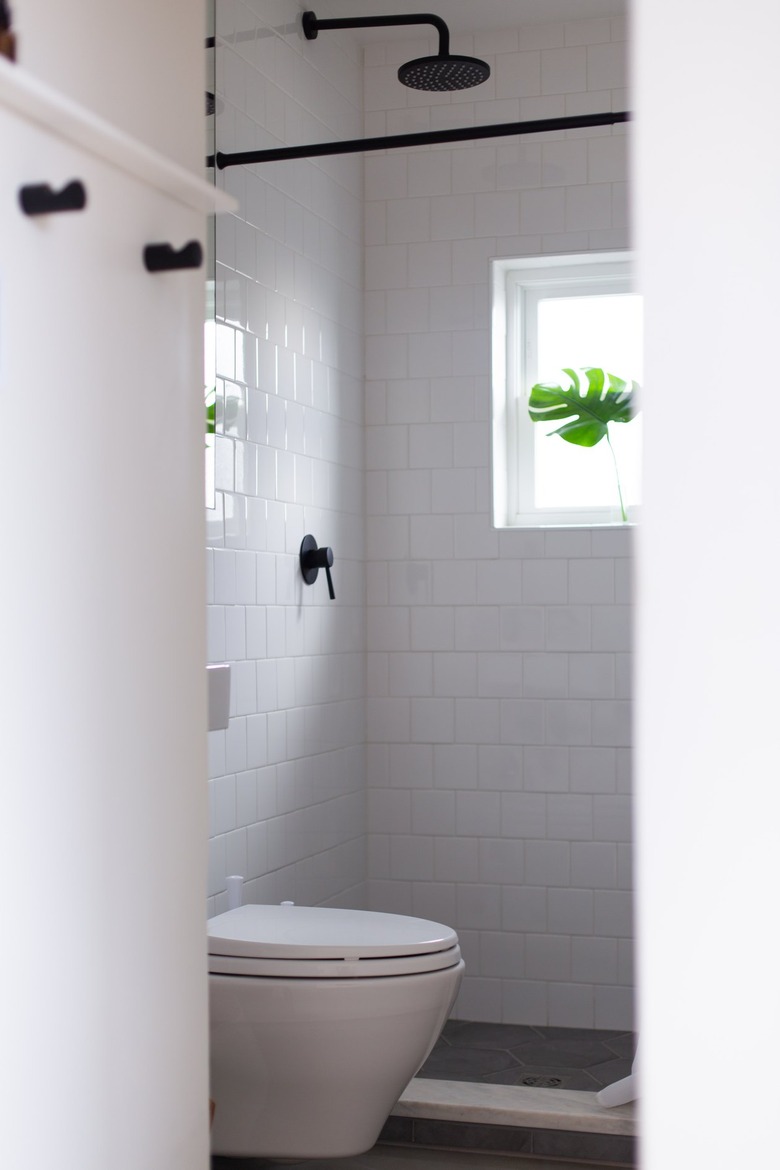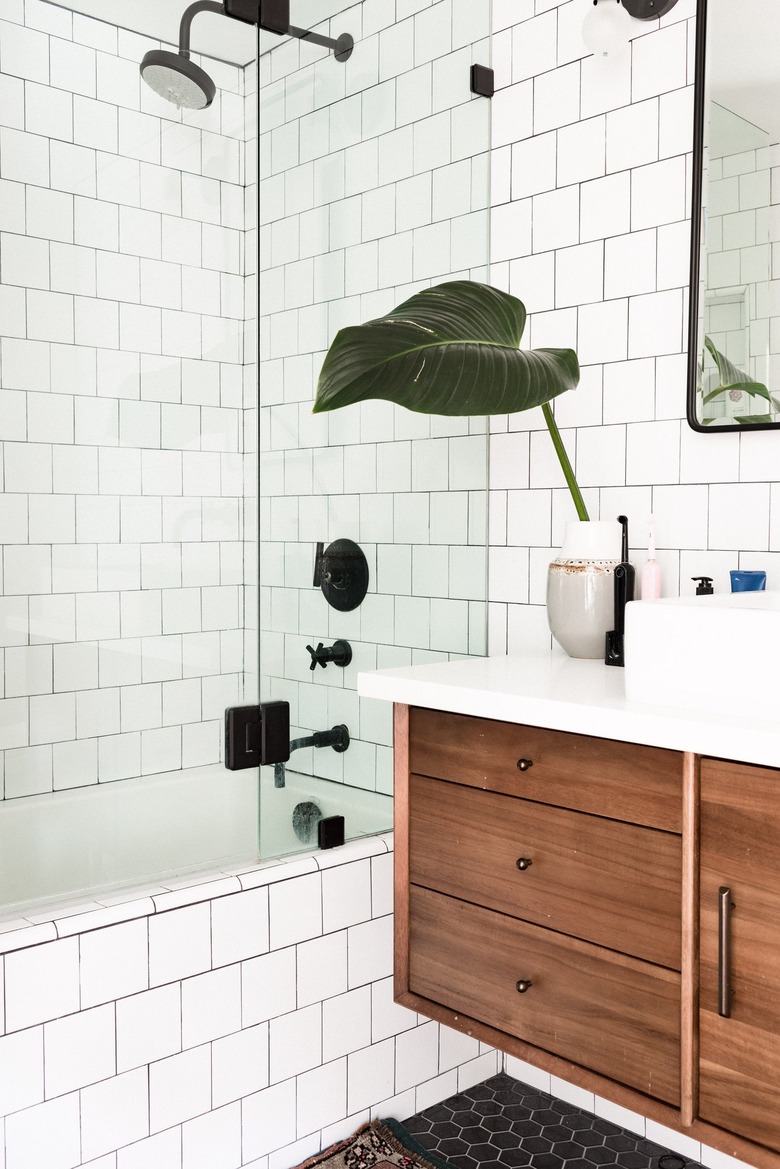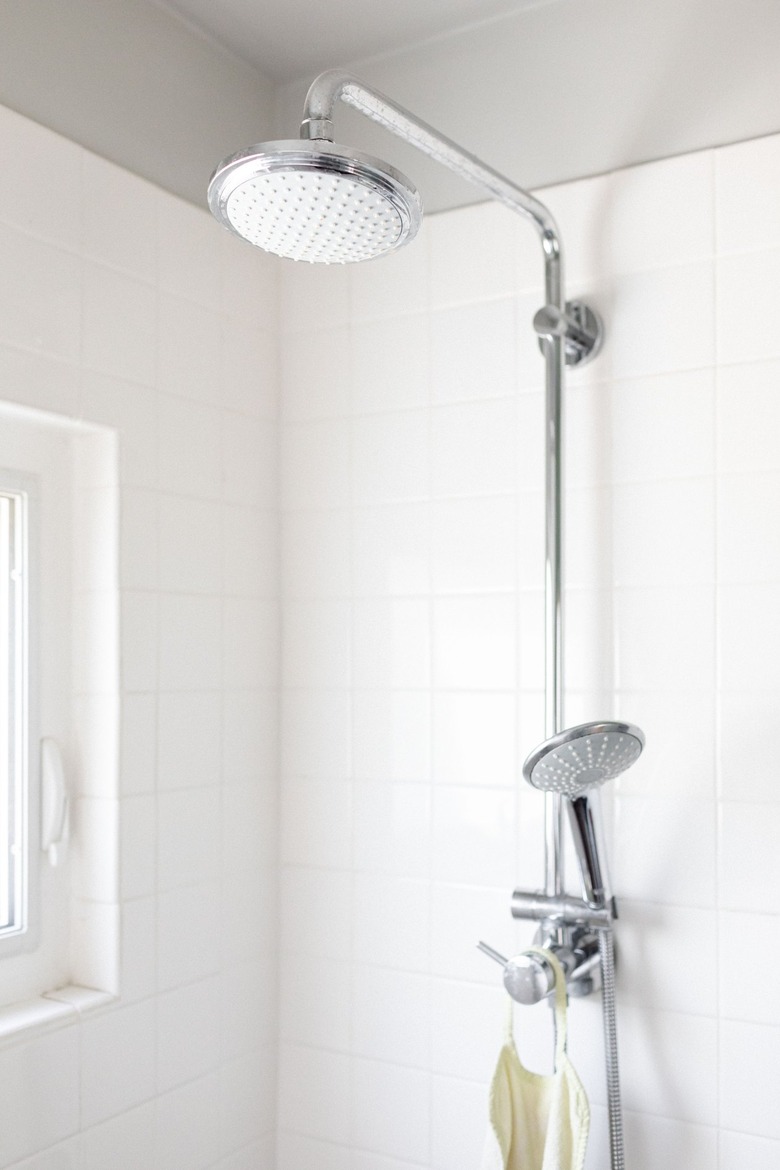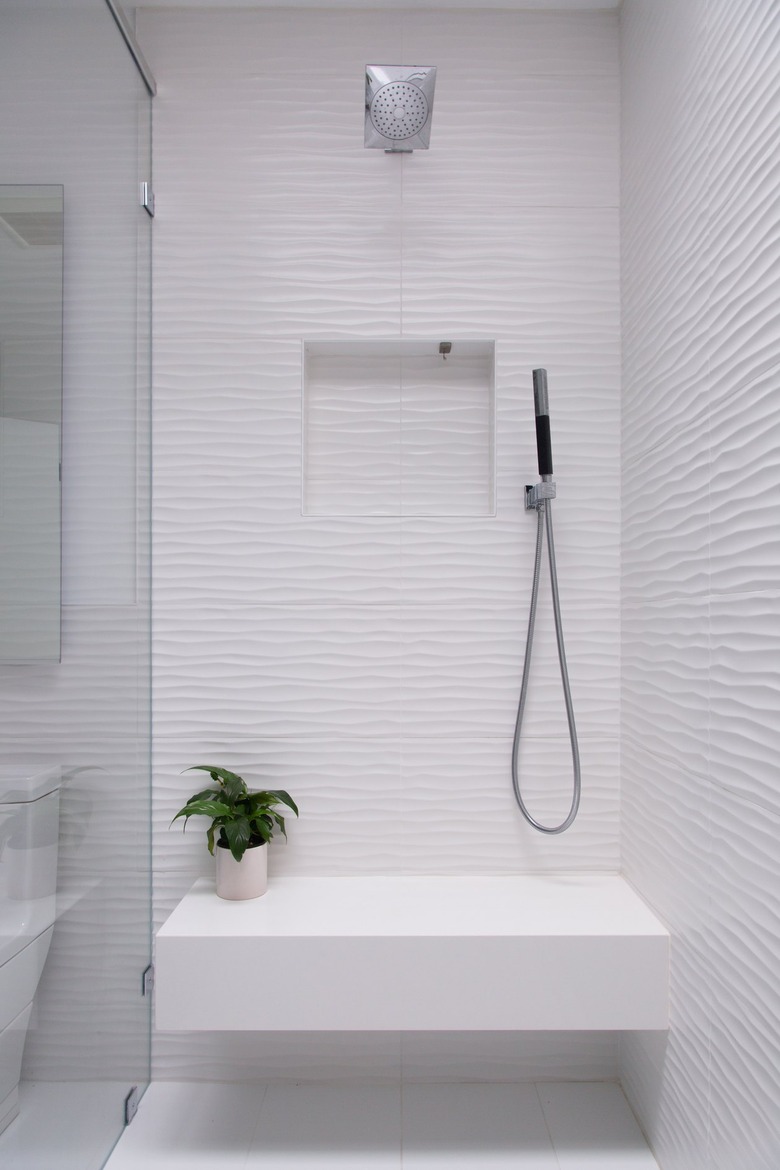Showerheads: Everything A Homeowner Needs To Know
Buying a new showerhead probably seemed simple until you found yourself standing bewildered in the home improvement store. The dizzying array of choices is enough to make your head spin. The good news is that showerheads in the United States use a standard 1/2-inch thread, so whatever head you choose should easily fit your plumbing. Every other feature of showerheads is negotiable, however, so it's best to have some idea of what you want before you go shopping.
Why the Showerhead Matters
Turning on your shower is easy enough, but quite a bit goes on inside your walls when you do so. When you turn on your shower, two cartridges open that allow water from the hot and cold water supply line to enter the shower valve, where the water is mixed to create the desired temperature. Most shower valves today use a pressure-balancing or temperature-sensitive device that prevents accidental scalding.
Once the water is mixed, it is sent up the vertical shower pipe and out through the shower arm to the showerhead, and this is where the magic happens. Your showerhead regulates the water flow, making sure water is not spilling out of your water pipes by the gallon. Not only does your showerhead conserve water but it can increase your water pressure while doing so. The right showerhead allows you to use less water without sacrificing water pressure.
Of course, your showerhead also disperses water as it leaves your pipes, spreading the water stream out into a wider spray that covers more surface area. Assuming the rest of your plumbing is functioning well, it is your showerhead that determines whether your shower feels like a gentle rain or a liquid back massage. It is also your showerhead that determines exactly where and how you can direct the water. Given all that your showerhead does, it is clear that it has a massive impact on the way your shower functions and feels.
Showerheads and Water Pressure
In order for your plumbing system to work properly, the system needs to have pressure. Usually, this water pressure comes from your local water utility, where water gets pumped through a pressure tank before being disbursed to area homes. The pressure level at your home is measured in pounds per square inch (psi).
Although some showerheads can work at different pressures, Benjamin Franklin Plumbing claims that most work best at a pressure between 40 and 60 psi. To measure the water pressure at your house, you can pick up a simple pressure gauge at any plumbing supply store. These gauges screw onto the end of any outdoor spigot and will tell you how much water pressure you are working with.
If you have high pressure or too little, a plumber can help you troubleshoot and correct the problem.
Water Flow Rate in Showerheads
When shopping for showerheads, don't confuse water pressure with flow rate. Water pressure measures how much force your water has behind it, while flow rate measures how much water comes out of the showerhead. These two measurements are not the same, and both matter when choosing a showerhead.
According to the United States Environmental Protection Agency (EPA), the average family in the United States uses 40 gallons of water per day just for showering. In an effort to reduce water usage, the EPA now mandates that showerheads sold in the U.S. cannot have a flow rate greater than 2.5 gallons per minute (gpm). As such, you won't find a showerhead at your local hardware store that moves more water than this. You can, however, find one that uses even less.
To conserve even more water, look for showerheads that bear the EPA WaterSense label. This certification is given to showerheads that prove they have a flow rate of 2 gpm or less. It is true that some low-flow showerheads can reduce water pressure and lead to a disappointing shower, but not all do. The best way to choose a low-flow showerhead is to read reviews and look for one that features a flow restrictor. A flow restrictor allows you to adjust the water flow rate so you can choose the setting that provides the optimal amount of water and water pressure for you.
Types of Showerheads
The most common type of showerhead is the wall-mount unit. This type of showerhead screws onto the end of the shower arm pipe that pokes out of your shower wall. If you prefer, you can also choose a top-mount shower that hangs from the shower ceiling. If you want your showerhead on the ceiling but moving the plumbing proves to be cost prohibitive, you can simply replace your standard shower arm with an extended or high-rise model. These can extend 12 to 16 inches beyond the shower wall and can raise the height of the showerhead to create the sensation of overhead plumbing without the expense.
If you have family members of greatly varying heights, consider a sliding bar showerhead. This setup allows you to easily slide the showerhead up or down during use. This lets the taller people in your home stand under the showerhead without ducking while allowing the shorter ones to still enjoy their optimal spray height.
A handheld wand is another popular option. Attached to a handle, these showerheads allow you to pull the showerhead off the wall and direct the spray exactly where you want it. A handheld showerhead makes it easier to bathe kids and pets and makes cleaning the shower easier.
Showerhead Spray Patterns
When choosing a showerhead, it helps to know what water spray patterns you prefer. Many showerheads utilize a wide spray pattern, spreading out the water over a large surface area so you can rinse off quickly and effectively. In this setup, every spray nozzle on the showerhead works in the same way, providing a consistent stream of water. You may also opt for a targeted spray, which sprays the water in a smaller, more concise area and shoots the water with a bit more force.
Some people prefer a pulsating spray. In this spray pattern, the water pressure alternates between harder and softer, coming out of different nozzles at different speeds. Many people find this pulsating sensation soothing after a rough day or a hard workout. Other people like a soft, gentle shower. These people typically prefer rain showerheads, which spray the water in a wider and softer pattern.
Extra Showerhead Perks and Features
Today's showerheads can be as fancy or utilitarian as you like. Some showerheads feature an adjustable spray pattern so that every member of your household can have the perfect shower. Others include filter cartridges that can help remove chlorine, iron oxide, sediment and other impurities from your shower water. This can prove especially helpful if your water contains hydrogen sulfide, which is what causes a rotten egg smell in the shower.
If you like to sing in the shower, consider a showerhead with built-in Bluetooth speakers that allow you to play your favorite tunes and serenade your rubber ducky. You can also choose a showerhead with various LED lighting schemes to alter the mood in your shower.
Are you into more practical features? Some showerheads feature a switch that lets you temporarily turn off the water while you are shampooing or lathering. You can then flip the switch back when you are ready to turn the water back on and rinse. This keeps you from sending water (and money) down the drain when you are not actually using the water stream.
Cost of Showerheads
The cost of a showerhead largely depends on what feature you want. If you want a basic showerhead in 2020, you can get one for around $25 to $45. If you want to step it up a notch and add an adjustable water stream or a few other basic features, you can expect to spend $60 to $120. A luxury showerhead can come in at $150 to $250, but the fun doesn't stop there. If you want, you can easily spend $1,500 or more on showerheads with lights, speakers and gold plating.
Many homeowners choose to install their new showerheads themselves. If you want a plumber to do the job, you can expect to pay an average of around $100 for labor for the job. Note that this cost covers only a simple installation. You will pay more to move plumbing for an overhead mount or to install more complicated features, like lighting.
How to Replace a Showerhead
Installing a new showerhead or replacing an old one is a simple job most DIYers can handle. Begin by turning the old showerhead counterclockwise to remove it. If it is on tightly or if it is corroded, spray it with a penetrating lubricant like WD-40 and allow it to soak for a few minutes. You may need a pair of tongue-and-groove pliers to hold the shower stem in place while you use another pair of pliers or a wrench to twist off the showerhead.
Clean the exposed threads on your shower arm with a stiff brush to remove any debris or old plumbers' tape. Wrap new plumbers' tape around the threads, wrapping it clockwise so it won't bind up when you screw on the showerhead. Screw the new showerhead into place until it is hand tight and then turn on the shower to check for leaks.
If you have a leak, use pliers or a wrench to tighten the showerhead 1/4 turn. Place a rag between the showerhead and the wrench to protect the finish in the showerhead. Always stabilize the shower arm as well so it doesn't turn with your showerhead and snap off inside your wall.
References
- Benjamin Franklin Plumbing: Choosing the Right Showerhead
- United States Environmental Protection Agency: Showerheads
- PlumbingSupply.com: How to Choose a Shower Head
- Lowe's: Choosing a Shower Head or Shower System
- HomeTips: How a Shower Works — Plumbing and More
- PlumbingSupply.com: Residential Water Pressure Explained
- ImproveNet: Shower Heads Cost Estimator
- Home Depot: How to Change a Showerhead



